Apple variety Kitayka
Apple-tree Kitayka has won attention for a long time. It is grown in all regions of our country. The culture has a compact crown, early ripening and increased frost resistance. The fruits are small, but very tasty and have a rich aroma.
- Varieties
- Bellefleur
- Golden
- Kerr
- Red
- Long
- Yellow
- Pink
- Pioneer
- Honey
- Paradise
- Cream
- Cinnamon
- Monica
- Saninskaya
- Columnar
- Growing features
- Boarding rules and dates
- Landing technology
- Care requirements
- Watering and loosening
- Top dressing
- Pruning and shaping
- Protection from pests and diseases
- Preparation for wintering
- Harvesting and storage
- Harvest application
- Gardeners reviews
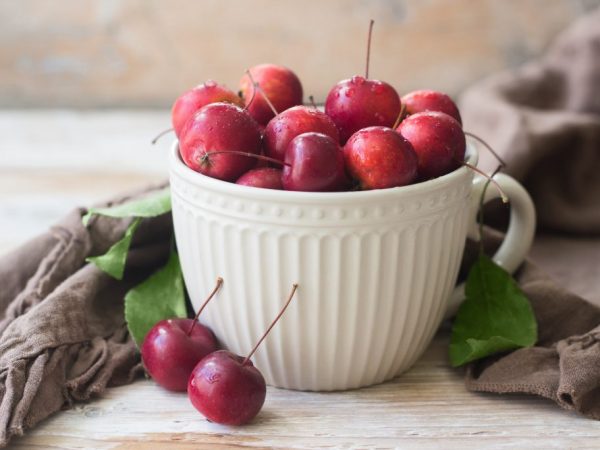
Apple variety Kitayka
Varieties
On the basis of the old variety Kitayka, bred by domestic breeders, a great variety of hybrid forms was obtained. They all differ in size, color, taste and shape of the fruit.
Bellefleur
This culture is most popular in the gardens of the Volga region and the North Caucasus region.
The plant is massive, with a spherical crown, enters the fruiting phase late - at the 8th year of life. This crop belongs to late-ripening varieties - the harvest takes place at the end of September.
The yield is average, unstable - up to 150 kg / ha.
The fruits are sweet, with a slight sourness. They are round-oval in shape with a slightly ribbed surface at the top. They weigh about 200 g. The skin is yellow, with a reddish blush.
Bellefleur has low scab resistance.
Benefits of culture:
- long shelf life - up to 4 months;
- good marketability and the ability to transport over long distances;
- ripe fruits do not crumble for a long time.
Golden
The golden variety of the Kitayka apple tree is best suited for the north-west and the Volga-Vyatka region. For breeding, seedlings of the White filling were taken.
Early culture: gives the first harvest already in the 4th year of cultivation. The fruits ripen in mid or late July.
In mature age, the tree reaches 8 m in height. In young seedlings, the crown has a panicle shape, in adults it is spreading, pyramidal. A plant with emerald, large leaves, densely covering the shoots.
The apples are yellow, medium-sized - weighing 50-80 g, stored for no more than a week. They are very sweet with a rich aroma.
The tree has good winter hardiness, but poor immunity to fungal and viral infections. The fruits are harvested on time and immediately allowed for processing, because on the fourth day after harvesting, their pulp becomes cottony and loses its original juiciness.
Kerr
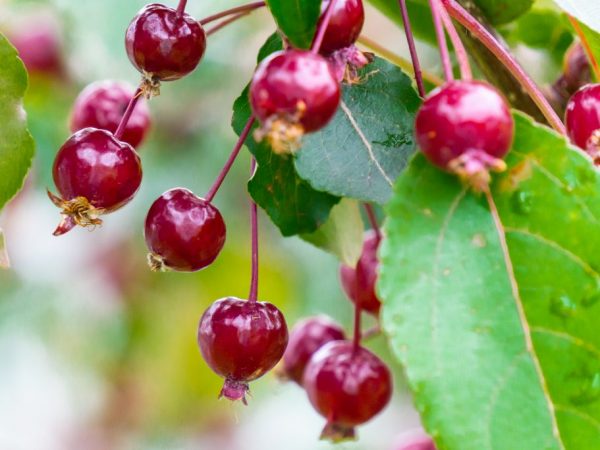
The fruits can be kept fresh until the end of January.
Description of the Kitayka Kerr variety:
- early maturity - the first harvest is removed in 3-4 years of cultivation;
- mid-late hybrid - fruit picking is carried out in the middle or at the end of September;
- the yield is unstable and low;
- the harvest is stored until the end of January;
- fruits are elongated, burgundy, weigh about 50 g, sweet and sour, tart.
This fruit crop has good winter hardiness and high disease resistance. One of the most beautiful varieties used by gardeners in landscape design.
Red
The variety is distinguished by good fertility - up to 150 kg can be removed from one adult tree.
Harvesting takes place in early September. Ripe apples are stored on the branches for a long time.
Red Kitayka gives apples of small size and weight - about 25 g, they ripen on long stalks and are collected in a bunch of several pieces. The skin is scarlet, the pulp is creamy, juicy, sweet and sour.
The tree is undersized, about 2-2.5 m high, which greatly facilitates the care of it and the harvesting procedure.
The crops have poor keeping quality - they are stored for about 2 months, so they are immediately allowed to process or eaten.
Resistance to scab and other fungal infections is weak.
Long
The description of the Dolgo variety includes several distinctive qualities:
- early fruiting - falls on the 4th year of cultivation;
- growing regions - the central, northern, north-western zone of Russia, as well as western-eastern Siberia;
- belongs to undersized varieties - the maximum height is 4 m;
- the crown is wide, densely branched, conical;
- fruits are yellow, very small, oblong - weigh 20 g;
- the pulp is sweet, creamy;
- shelf life is about 20 days.
The main advantages include high resistance to severe winters, as well as immunity to scab and powdery mildew.
Yellow
Kitaika Zheltaya belongs to high-yielding varieties - up to 150 kg are removed from it annually. But the fruits are small, yellow in color - weighing 20 g and resemble large cherries in size.
The columnar tree is characterized by an average growth - the maximum height is 2.5 m. The harvest ripens by August. It is not affected by scab and other fungal diseases.
Pink
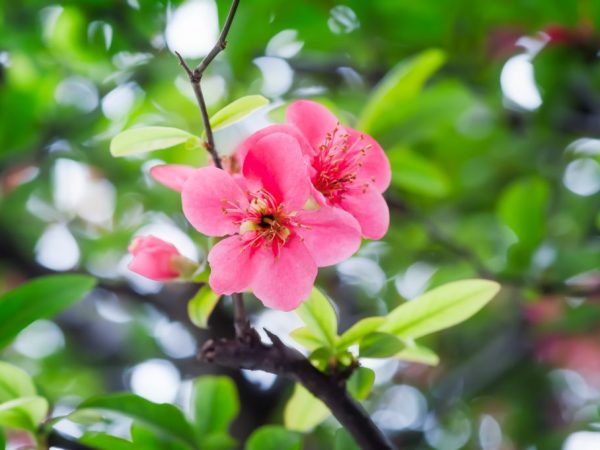
The tree can be used for decorative purposes
Columnar, small-fruited variety Rose Skazka has high decorative qualities, especially during the flowering period.
The tree blooms luxuriantly and profusely, releasing numerous red flowers. Its height varies from 1.5 to 2 m.
Fruits are small, about 50 g, red-raspberry color. The variety is valued for its stable and annual fruiting.
Pioneer
The description of this culture includes several important benefits:
- the plant is characterized by strong growth;
- has good winter hardiness;
- good fertility;
- excellent immunity against fungal infections;
- high decorative qualities.
Crohn of medium density. The crop is not stored for a long time, therefore, after harvesting, it is allowed for processing.
The fruits of the Pionerka apple tree are small - weigh about 20 g, thin-skinned, red on the outside and inside, fragrant and very sweet.
Honey
The honey apple tree is a tall crop with a rounded crown, excellent for planting in the central regions and the middle zone. It has good winter hardiness.
The fruits are harvested in the last days of August. The apples are sweet with a honey aftertaste. Small in size - weight about 40 g.
The crop ripens quickly and crumbles massively if not removed in time. Apples spoil quickly, overripe specimens tend to crack, so they are immediately processed.
The variety is weakly resistant to scab and other fungal infections, therefore, during the cultivation process, it needs preventive treatments.
Paradise
This species has several names - Rayskaya, Ranetki, Raika. Differs in high growth - 4-5 m, crown circumference - 3-4 m.
The apples of this Kitayka are round, collected in several pieces in a bunch and develop on thin long stalks. The skin is thin, light green in color, contains a slight red blush. The taste is sweet-sweet, with a slight astringency.
The tree is distinguished by increased winter hardiness, drought resistance and the ability to grow and bear fruit in any climatic conditions.
Cream
This hybrid was obtained on the basis of the Apricot apple variety. The tree has massive dimensions - it reaches 5-6 m in height.
Small apples - 70-80 g, yellow-green, with longitudinal pink stripes. In the context, creamy, juicy and sweet in taste.
Harvesting takes place in early September. Fruits are stored for about 3 weeks, therefore, after harvesting, they are allowed to process.
The plant has good winter hardiness, scab and powdery mildew resistance.
Cinnamon

The fruit tastes good.
The brown (Cinnamon) apple tree is a special kind of Kitayka apple tree. It is characterized by strong growth - at maturity, the tree reaches 4-5 m.
Fruits weighing from 120 to 170 g. Round, slightly flattened, thick-skinned with yellowish or greenish-yellow skin. Numerous blotches or small stripes of a reddish hue are visible on the surface. They taste sweet, juicy, with a rich aroma.
They are harvested in September, after 2-3 weeks they acquire their true taste and aroma. Shelf life under cool conditions is approx. 3 months.
The culture has good resistance to severe frosts and immunity against scab.
Among the disadvantages are unstable and late fruiting, short storage period of the crop.
Monica
Medium late variety - the harvest ripens in the last days of September. A tree of small stature - up to 4 m high with a sparse-tiered crown, is characterized by high fertility and excellent taste.
One of the largest-fruited subspecies is oval apples, the size of a chicken egg. The pulp is sweet, covered with a thin, light green skin with a pink blush.
Monica is distinguished by high winter hardiness and drought resistance, therefore it is suitable for planting not only in the southern, but also in the northern zone of the country.
Saninskaya
Late, large-fruited variety, suitable for cultivation in the Volga region.
Depending on the climatic zone, the harvest time is different - from the end of August to the beginning of November.
Fruit ripen a week after removal. The apples are small - weighing 20-25 g, of various shapes (round, oval, oval-conical) with a ribbed surface. The skin is thin, yellow in color, contains a reddish blush. The pulp is granular, yellowish, sweet and sour in taste.
The main advantages include:
- durability;
- resistance to adverse weather conditions and severe winters;
- good immunity against fungal diseases.
The only drawback is that the fruit has a mediocre taste.
Columnar
Columnar Chinese is one of the most winter-hardy species, which is able to withstand temperatures as low as -40 °. Shoots are covered with an unusual yellow-orange bark.
This is an early crop - the harvest ripens in mid or late July. But after ripening, the fruits begin to crumble en masse.
The variety is small-fruited (apples weigh no more than 20 g, amber-yellow in color with a harmonious, sweet and sour taste).
The crop is stored for no more than a week, therefore, after harvesting, it is used to prepare various preparations for the winter.
Growing features
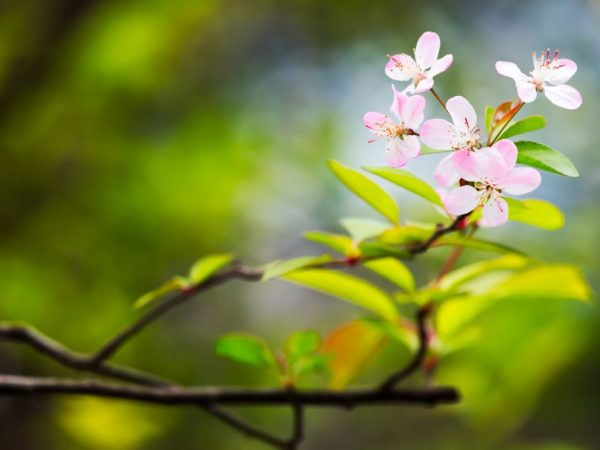
It is recommended to buy seedlings in specialized stores.
- For all types of apple trees, a sunny area is suitable, where there is no swampy and surface passage of groundwater: Kitayka does not tolerate waterlogging of the soil - it begins to rot and as a result dies. Therefore, before planting, good drainage from sand and peat is introduced into the soil.
- Loamy soil enriched with peat, organic and mineral fertilizers is suitable for planting. A bucket of rotted manure, the same amount of peat, 1 kg of wood ash, 50 g of superphosphate and potassium salt are applied per m². For spring planting, the soil is harvested in the fall, then dug up. For autumn - the above listed components are mixed with garden soil and poured into planting pits.
- If you want to get a real variety with strong immunity and good fertility, the seedling should be bought in a specialized nursery. The best planting material is a one or two year old plant with a closed root system.
You can also use specimens with open roots, only before planting they are soaked in a clay mash.
When buying, you should conduct a thorough examination of the roots and the aboveground part for damage by diseases, pests, mold.
Sturdy plants will have strong, green shoots with erect, dark green leaves and buds. The root system must be of a uniform light or dark brown color and at least 40 cm long.
Boarding rules and dates
Depending on the region of cultivation, the planting time will be different:
- in the south, seedlings are planted in the soil in the spring, as soon as the threat of the last frost has passed, or in the fall - 2 months before the onset of cold weather;
- in regions with a cool climate (in the north, in Siberia, central and middle lane), spring planting will be preferable, so that during the entire growing season the plants have time to get stronger and take root before the onset of winter.
Landing technology
The landing technique consists of several stages:
- holes are pulled out along the width and height of the plant root system - about 60x80 cm;
- drainage from pebbles, broken brick or crushed stone is laid on the bottom;
- drive in a peg to support the tree;
- then half the hole is covered with a nutrient mixture (for autumn planting);
- the roots of the plant are laid on top, straightened, sprinkled with soil and trampled in the area of the trunk;
- the plants are tied to a support, watered abundantly with warm, settled water (3 buckets per tree) and mulched with a thick layer of earth.
Care requirements
The main care of this crop includes several activities on which the future growth, immunity and fruiting of plants depend.
Watering and loosening
In the first years of life, this culture requires regular, but moderate soil moisture, which will ensure the rapid growth of the root system and the aboveground part.
Use settled water at room temperature.
The first moistening is done in early spring - before the buds begin to bloom, the second - before flowering and two weeks after, then - at the stage of pouring the fruits.
The last watering is done in late autumn after harvest and leaf fall.
The day after watering, the soil is loosened to increase its aeration. During loosening, weeds are removed, which drown out young trees, take away nutrients and moisture from them.
Top dressing
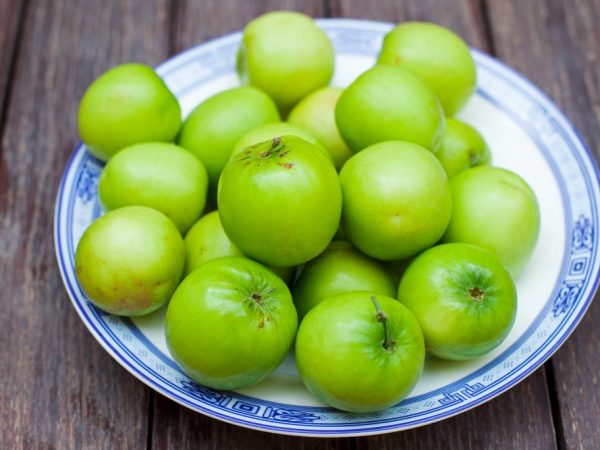
Good care will provide you with a rich harvest
Seedlings begin to fertilize in the third year of life. The first top dressing is applied at the beginning of spring in the area of the near-trunk zone and combined with watering. Azophoska solution is used, which stimulates the growth of young shoots and foliage.
At the beginning of the budding period, trees are fertilized with superphosphate and potassium sulfate to improve the quality and quantity of the crop. The same composition is used at the stage of forming fruit ovaries.
The last feeding is done in the fall - after leaf fall. The near-stem zone is spilled with a urea solution. Then mulch with a thick layer of earth.
Pruning and shaping
Formation is carried out for ordinary plants, columnar varieties do not need this.
Usually, a sparse-tiered type of crown is chosen.
The first trimming is carried out immediately after planting - the center conductor is trimmed 20 cm from the top. This manipulation stimulates the tree to develop lateral (skeletal) branches.
In the second year of cultivation, the formation involves pruning the central branch and side shoots. The first row is also formed - 3-4 of the strongest shoots in the row are left, and all the rest are cut into a ring. In the 3rd year, the second row is formed - from 3 branches, in the 4th - from 2 shoots.
Annual sanitary pruning is also done in the spring and fall. All branches damaged by frost, parasites and diseases are cut out on the trees. Places of cuts are sprayed with copper sulfate, then smeared with garden var.
Starting from 7-8 years of age, a rejuvenating haircut is carried out - all shoots of five years of age are removed, and the young growth is cut to a third of the length.
Protection from pests and diseases
Many varieties of Kitayka apple trees have good disease resistance, but they still need to be periodically treated with fungicides (Bordeaux liquid and copper sulfate) from scab, powdery mildew, septoria, rust and gray rot.
Preventive work is carried out in early spring - before the start of sap flow and in late autumn - after leaf fall. The same funds are used for medicinal purposes.
From the invasion of parasites such as aphids, spider mites, moths, leafworms and weevils, chemical and folk remedies are used.
Of the pesticides, Actellik, Fundazol, Skor, Aktara have proven themselves well. From folk recipes - onion, pepper, garlic infusions, as well as ash-soap and tobacco-soap solutions.
The treatment is carried out two weeks after spraying with fungicides - in spring and autumn.
Preparation for wintering
This is one of the most important steps in care, on which the future health of the plant and its further fruiting depends. Preparation for wintering consists of several stages:
- first, the plant is fertilized with a urea solution;
- then all damaged branches are cut off, the trunk is whitewashed with slaked lime;
- sprinkle with a thick layer of earth, wrap with a metal mesh to protect against rodents;
- the trunk and skeletal branches are covered with spruce branches or roofing felt, undersized seedlings can be covered with a cardboard box or wooden box.
In such a shelter, the tree is kept until spring. As soon as the snow begins to melt, the shelter is removed.
Harvesting and storage
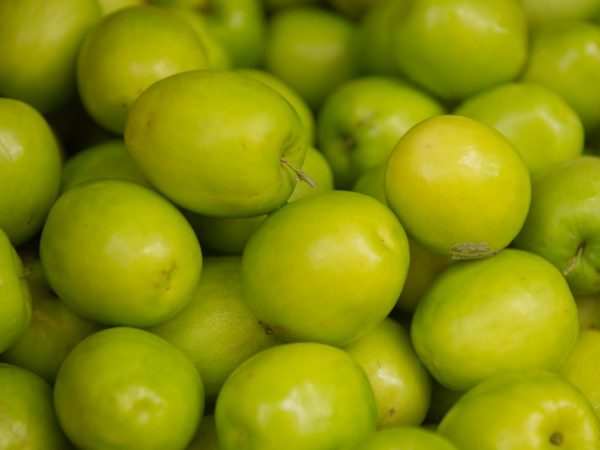
The fruits have good keeping quality.
Mass harvesting takes place from late August to late September, depending on the variety. Keeping quality is different for all varieties.
The Belfleur variety has the longest shelf life.
There are several ways to store crops:
- in the refrigerator, in the compartment for fruits and vegetables;
- in a basement or cellar, in wooden or cardboard boxes, while each layer of apples should preferably be shifted with hay or paper;
- in apartment conditions, they are stored on a glassed-in balcony or loggia until the onset of the first frost.
All of these methods are suitable for varieties that are stored for at least two months.
Harvest application
Almost all varieties give a tasty, juicy and healthy fruit harvest of universal application. Apples are consumed fresh, used for making compotes, preserves, jams, marmalades, various desserts and pastries.
Almost all varieties are suitable for drying, candied fruits, the main thing is to remove the fruits in time and prevent them from overripening.
Gardeners reviews
There are many varieties of the Kitayka variety, each apple tree has its own advantages and disadvantages. Gardeners say that the harvest is very tasty.
At the same time, it is very easy to grow a crop. The main thing is to comply with all agrotechnical standards, planting and care rules.

